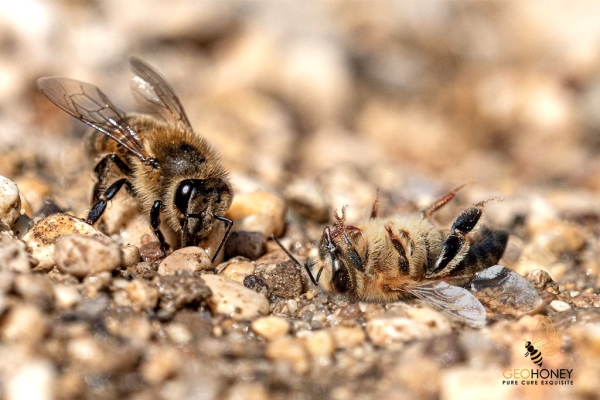- Tokyo: 07:52
- Singapore: 06:52
- Dubai: 02:52
- London: 22:52
- New York: 17:52
Damaging Effects Of Pesticides: Honey Bees Take Multiple Generations To Recover!

Pesticides are of significant harm to the people and insects too. Several studies are showing that pesticides pose damaging effects on the bio-diverse environment. However, a little less is known about how much pesticides affect insects in the long term. Recently, research hit the news showing that even a solitary exposure to insecticides in a honey bee's first year of life influences offspring creation. Since the impacts of the pesticides are cumulative, this results in a general reduction in the honey bee populace.
Pesticides are generally used multiple times a year especially in agricultural areas. This shows the severity of how it can impact the honey bee populations. The research has found that bees take multiple generations to recover from the ill effects of being exposed to insecticides even just once. Doesn't this fact scare you? Yes, but it is true!
Researchers have experimented for two years in a field. They utilized the pesticide imidacloprid, which is intensely harmful to honey bees, and evaluated every one of the combinations of exposure - uncovering the honey bees in their first year, in their first and second, simply in their subsequent year. Usage of this sort of pesticide, neonicotinoids, is restricted, but production is not, and large quantities are exported each year.
This pesticide is present in all plant tissues and is responsible for the adverse effects it poses on the nervous system of the bees. So it can have lots of various sorts of consequences for honey bee behavior and physiology.
The honey bees presented to imidacloprid when they were hatchlings and afterward never again had 20% less offspring than the honey bees who had never been close to the chemical. Those exposed only once in their grown-up year had 30% less offspring than their unexposed partners, and in the honey bees exposed for two years, the impacts accumulated, with a 44% decrease in offspring.
Significant effects to pesticide exposure include reduction in bee reproduction, impacting performance of the adult bee, reduction in population growth by almost 71%, and many other such effects. As these effects grow, it might take only a few years to bring bee populations to dangerously low levels.
Since the impacts of different exposure add up, the absolute consequences for a honey bee province's populace can be destroyed. It may take different ages for a populace to recuperate. This honey bee species is explicitly experiencing an absence of food assets, with fewer wildflowers to feed.
This study proved that even if pesticide usage is wholly banned in 2022, the adverse effects of pesticide use in 2021 will be visible. Mr. Basem Barry, CEO & founder of Geohoney, says that gaining more knowledge of how pesticides accumulate in the environment will help predict the risks of pesticide application. Diminishing exposure of bees to insecticides as much as possible is vital, and fusing these carry-over impacts into examination and integrating risks to pollinators into pest management strategies in the future is equally important.




knowledge gaining article, nice one.